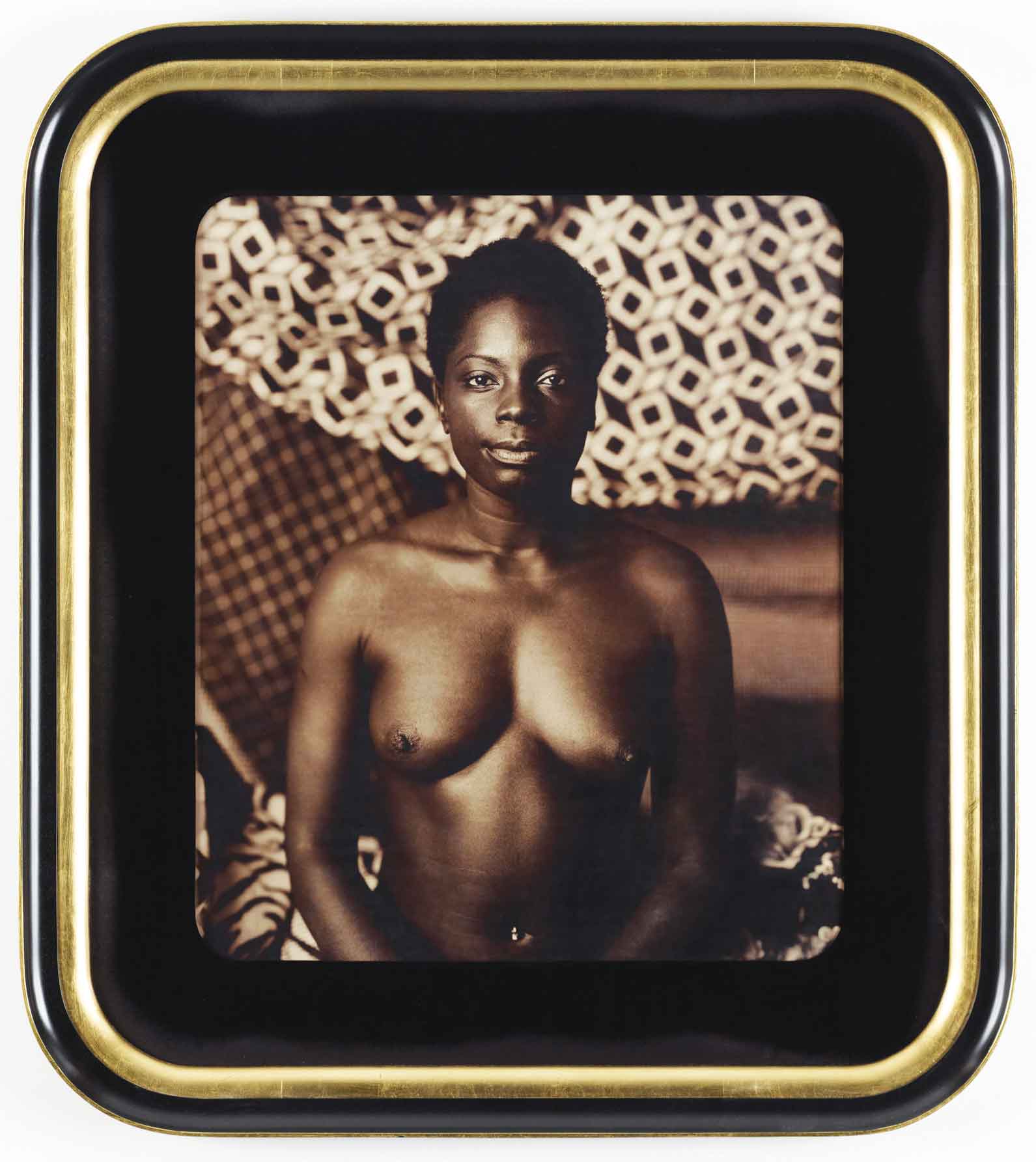« Reviews
Mickalene Thomas: More Than Everything
Lehmann Maupin Gallery - New York
By Anne Swartz
Even as she works in a range of media, Mickalene Thomas’s signature is clear and evident in her recent show at Lehmann Maupin Gallery on New York City’s Lower East Side. She’s looking at a bright view of the world and digesting a range of sources: from Gustave Courbet’s corporeal paintings to David Hockney’s prismatic interiors and landscapes to Romare Bearden’s collaged images of urban life to Carrie Mae Weems’s stark portraits of African-Americans to the innovative compositions of Edouard Manet to the lush set designs of Malinese portrait photographers Seydou Keïta and Malick Sidibé. She draws from many, many sources beyond these artists. Her compositions, framing, use of props, and fractured treatment of the surfaces, even in the ways she manipulates the use of glistening lights and darks, evidence her sophistication.

Mickalene Thomas, Courbet 4 (Marie: Centered), 2011, Polaroid, 24” x 20.” Courtesy the artist and Lehmann Maupin Gallery, New York.
The drawings, two- and three-dimensional collages, and most of the photographs are small in scale, which suggests that they have status as “sketches” and preparatory works, except for several black-and-white Polaroids. She usually employs a slightly larger format than the works in this exhibition; additionally, she hangs many of the works in lozenge configurations, salon-style making the small works combine into larger image presentations. Her focus on the African-American woman and man, her own face and figure (whether prone and nude or dressed-up and made-up), the interior, or the landscape is imbued with elegance. She continues to use her mother, her friends, celebrities, and models. The artist’s portrait has figured into her art in the past, but now she includes a small self-portrait, in which her masquerade is feminized (as is the name in the title), complete with childish hair barrettes and long, decorated nails. The happy colors are minimized by the melancholic facial expressions
Thomas has looked at the queer figure before in her transgender series, among other works. Now her portraits are more compellingly erotic, especially in her black-and-white Polaroids, such as the image Courbet 4 (Marie: Centered) where the artist positions the nude face and torso in the forward picture plane. The textures and lighting emphasize the luxuriant skin surface, which is then underscored by the textile patterns in the background.
The interiors and landscapes suggest an exciting new direction in the oeuvre of an artist who has had a meteoric rise. Interior: Blue Couch with Green Owl is a small, two-dimensional collage, accented by brightly saturated geometric and amorphous patches of blue and florescent pink-colors the artist has embraced in these intensities before.
The bright colors and happy mood of this work references one of the strongest influences I see permeating Thomas’s work that she hasn’t mentioned in interviews; that is the sun-soaked, joyous work of Henri Matisse. As I studied this recent exhibition, I saw an upbeat, almost Pop sensibility; but it isn’t Warhol or Lichtenstein who come to mind when I remember the works. It is, instead, the glamour, the exoticism, and the robustness of Matisse’s line, his joie de vivre, and his sensual mood recur anew in Thomas’s works.
(September 15 - October 29, 2011)
Anne Swartz is a professor of art history at the Savannah College of Art and Design. Her writing has been published in Brooklyn Rail, NY Arts, n.paradoxa, Symploke, and The Cleveland Museum of Art Bulletin.
Filed Under: Reviews


































